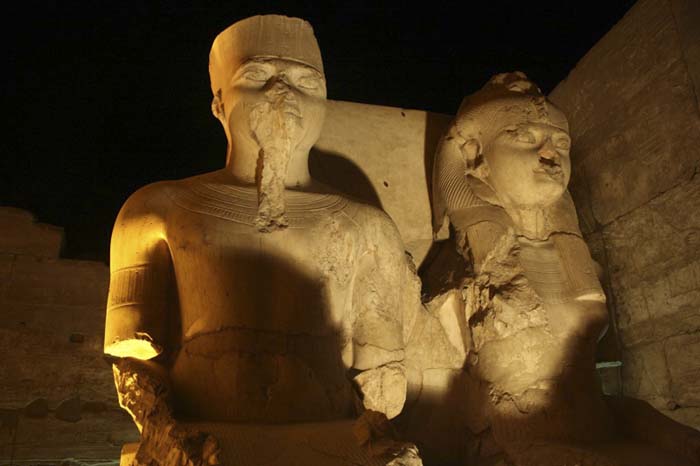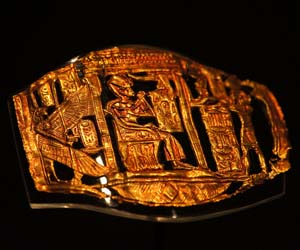King Tut - for Kids
King Tut, short for King Tutankhamun, was a pharaoh during Ancient Egypt's New Kingdom. He's mostly known for his famous tomb and the supposed curse that followed those who opened it. As a pharaoh, he was of minor importance and only reigned for less than a decade. However, he is an interesting character in Ancient Egyptian history.
King Tut's Family
King Tut's father was the Pharaoh Akhenaten. Experts were able to determine this through DNA testing of both of their mummies. It is likely that his mother was Akhenaten's full biological sister, making his father also his uncle and his mother also his aunt.
Tutankhamun's stepmother was the famous Queen Nefertiti.
The Life of King Tut
King Tut was born sometime around 1341 BC. He was known as Tutankhaten until he assumed the throne and changed his name to mean "living image of Amun". He also married his half-sister after becoming the king. Her name was Ankhesanamun and she was the daughter of Akhenaten and Queen Nefertiti. Tut and Ankesanamun conceived children twice, but both died before they were born.

© Cormac Lawler - Statue of King Tut and Ankhesenamun
During his short reign, Tutankhamun reversed religious changes his father had made, returning the god Amun to a place of honor and returning the capital city to ancient Thebes. His father's direction to worship Aten and ban worship of Amun was unpopular in Ancient Egypt, so Tut's changes were welcome.

© Tjflex2 - Plaque at Thebes, depicting King Tut
The Tomb of King Tut
King Tut's tomb is perhaps the most famous of all the tombs in the Valley of the Kings. It is not because of his historic importance. It is because his tomb was unusually intact. When Howard Carter and his team opened the tomb in 1922, it was clear that ancient robbers entered the tomb long ago.
However, there were still many treasures within the tomb's chambers. When his burial chamber was revealed, there was a lot of gold inside. Later, a magnificent gold mask was even found on the mummy's face. Beyond that room, there was yet another room filled with the riches the Ancient Egyptians believed King Tut needed in the afterlife, as well as the mummies of his two stillborn daughters.

© Wesley Lelieveld - Death Mask of Tutankhamun
Click here to learn more about The Tomb of King Tutankhamun
King Tut's Health and Cause of Death
King Tutankhamen was not healthy in his life, partly because his parents were brother and sister. He had a slight cleft palette, which is a facial deformity. He may have also had scoliosis that made his spine crooked. He had bone deterioration in his foot that led to his use of a cane.
The king also had malaria multiple times. His poor state of health, along with physical and genetic disorders, eventually led to his death at only 19 years of age.
